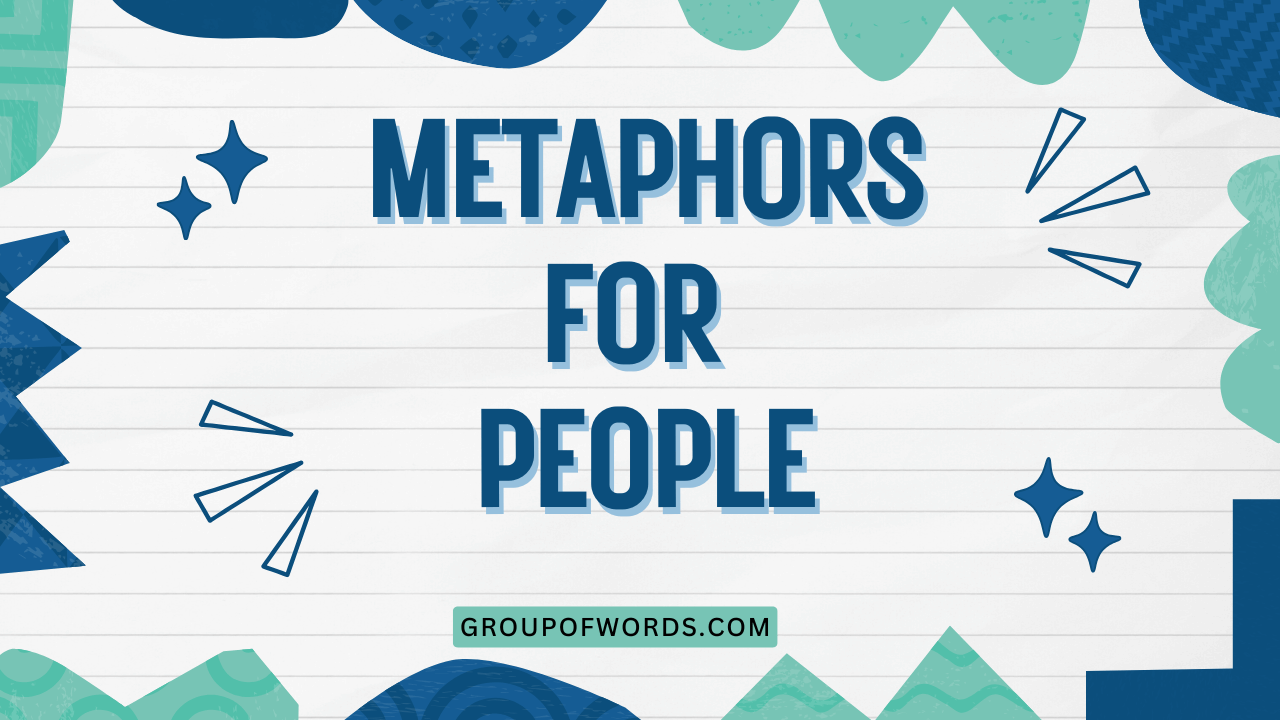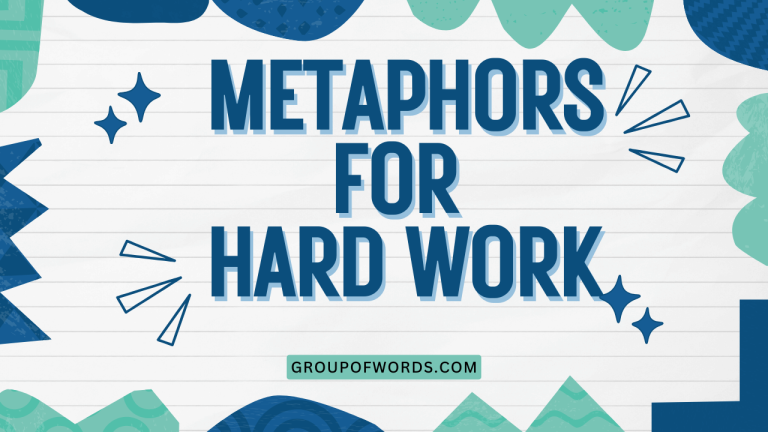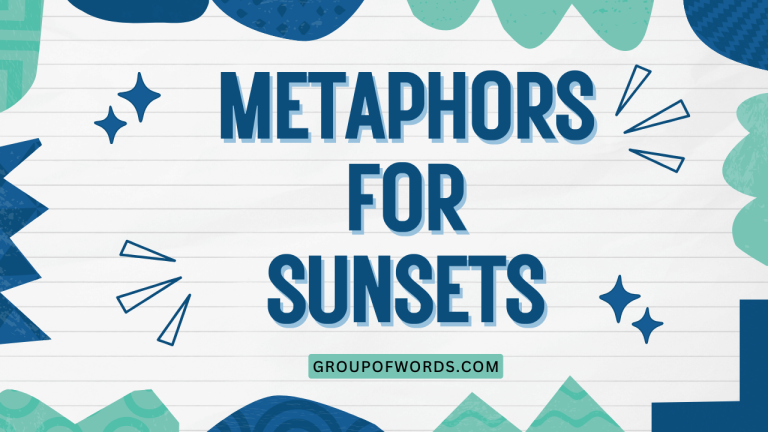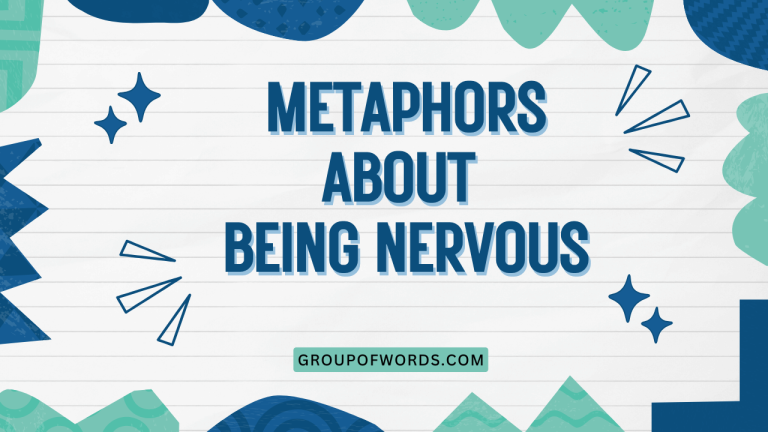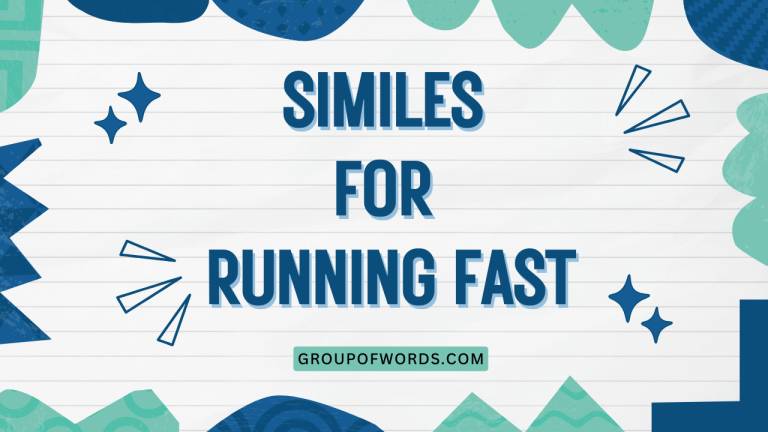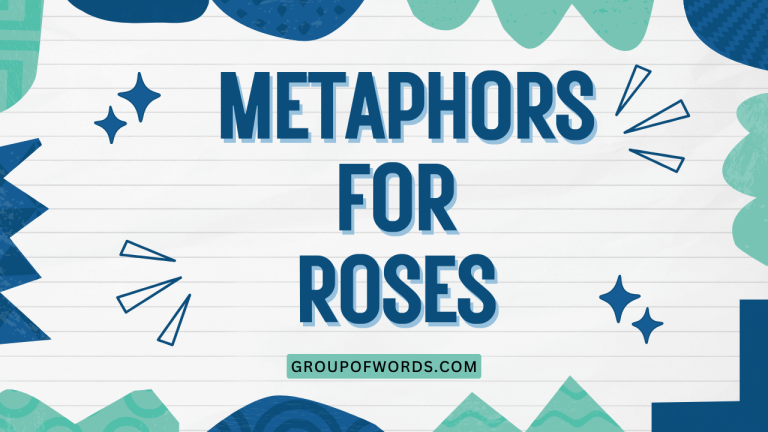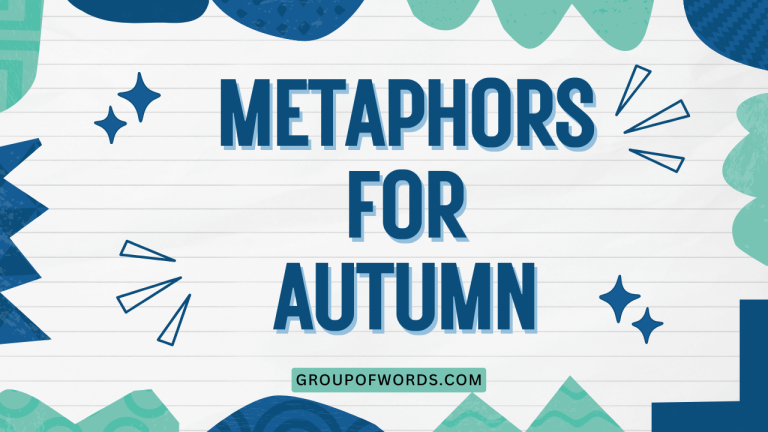Metaphors for People: A Comprehensive Guide
Metaphors are powerful tools in the English language, allowing us to understand abstract concepts by relating them to something more concrete. When applied to people, metaphors can reveal deep insights into character, behavior, and societal roles.
Mastering the use of metaphors for people enhances both your writing and comprehension skills, enabling you to express ideas with greater nuance and impact. This guide is designed for English language learners of all levels who wish to deepen their understanding of figurative language and improve their ability to use metaphors effectively.
Through definitions, examples, and practice exercises, you will learn how to identify, interpret, and create compelling metaphors for people.
Table of Contents
- Definition of Metaphors for People
- Structural Breakdown of Metaphors
- Types of Metaphors for People
- Examples of Metaphors for People
- Usage Rules for Metaphors
- Common Mistakes with Metaphors
- Practice Exercises
- Advanced Topics in Metaphors
- Frequently Asked Questions
- Conclusion
Definition of Metaphors for People
A metaphor is a figure of speech that directly compares two unrelated things without using “like” or “as.” Unlike similes, which make explicit comparisons, metaphors imply a similarity between two entities. When used to describe people, metaphors can highlight certain qualities, characteristics, or behaviors by associating them with something else.
This comparison isn’t literal but is intended to create a vivid image or convey a deeper meaning. The function of a metaphor is to provide insight, evoke emotion, and add depth to the description of a person.
Metaphors for people are used extensively in literature, poetry, everyday conversation, and even professional settings. They allow us to express complex ideas about individuals in a concise and impactful way.
For instance, saying “He is a lion in battle” doesn’t mean the person is literally a lion, but it suggests they are courageous, fierce, and dominant.
Structural Breakdown of Metaphors
A metaphor consists of two main elements: the tenor and the vehicle. The tenor is the subject being described (in this case, a person), and the vehicle is the object or concept used to describe the tenor. The connection between the tenor and the vehicle is the ground, which represents the shared characteristics or qualities that make the metaphor effective.
For example, in the metaphor “She is a ray of sunshine,” “she” is the tenor, “ray of sunshine” is the vehicle, and the ground is the shared quality of brightness, warmth, and positivity. Understanding these elements helps in both interpreting and creating meaningful metaphors.
Types of Metaphors for People
Metaphors for people can be categorized based on the type of vehicle used. Here are some common categories:
Animal Metaphors
Animal metaphors compare people to animals, often to highlight specific traits associated with those animals. These metaphors can convey strength, cunning, loyalty, or other characteristics.
Object Metaphors
Object metaphors compare people to inanimate objects, emphasizing qualities such as resilience, steadfastness, or fragility.
Nature Metaphors
Nature metaphors relate people to elements of nature, such as the weather, landscapes, or natural phenomena. These can express a person’s temperament, influence, or impact on others.
Food Metaphors
Food metaphors describe people in terms of different types of food, often highlighting their personality, attractiveness, or value.
Color Metaphors
Color metaphors use colors to represent a person’s mood, personality, or social standing.
Examples of Metaphors for People
The following tables provide extensive examples of metaphors for people, organized by category. Each example includes the metaphor, the tenor (the person being described), the vehicle (the object or concept used), and the ground (the shared quality).
Table 1: Animal Metaphors
This table showcases various animal metaphors used to describe people, illustrating how different animal characteristics can be attributed to human qualities.
| Metaphor | Tenor (Person) | Vehicle (Animal) | Ground (Shared Quality) |
|---|---|---|---|
| He is a lion in battle. | He | Lion | Courage, Strength |
| She is a sly fox. | She | Fox | Cunning, Cleverness |
| He is a stubborn mule. | He | Mule | Stubbornness, Persistence |
| She is a busy bee. | She | Bee | Industriousness, Hard Work |
| He is a gentle lamb. | He | Lamb | Gentleness, Meekness |
| She is a hawk, watching her prey. | She | Hawk | Vigilance, Focus |
| He’s a snake in the grass. | He | Snake | Deceitfulness, Treachery |
| She sings like a nightingale. | She | Nightingale | Beautiful singing voice |
| He’s a real bear in the morning. | He | Bear | Grumpy, Irritable |
| She’s as graceful as a swan. | She | Swan | Grace, Elegance |
| He’s a wolf in sheep’s clothing. | He | Wolf | Deceptive appearance |
| She’s a social butterfly. | She | Butterfly | Sociability, Outgoing nature |
| He’s a lone wolf. | He | Wolf | Independent, Solitary nature |
| She’s like a mother hen to her friends. | She | Hen | Protective, Caring nature |
| He is a shark in the business world. | He | Shark | Aggressiveness, Ruthlessness |
| She is a scaredy cat. | She | Cat | Fearfulness, Timidity |
| He is a peacock, always showing off. | He | Peacock | Pride, Vanity |
| She is a clinging vine. | She | Vine | Dependence, Neediness |
| He is a horse, always ready to work. | He | Horse | Strength, Diligence |
| She is a dove, symbolizing peace. | She | Dove | Peacefulness, Harmony |
| He is a pack rat. | He | Rat | Hoarding Tendencies |
| She is a parrot. | She | Parrot | Repetitive Speech |
| He is a pig. | He | Pig | Greed, Sloppiness |
| She is a queen bee. | She | Bee | Dominance, Leadership |
| He is a roadrunner. | He | Roadrunner | Fast-paced, Energetic |
Table 2: Object Metaphors
This table presents examples of object metaphors, demonstrating how inanimate objects can be used to describe human characteristics and experiences.
| Metaphor | Tenor (Person) | Vehicle (Object) | Ground (Shared Quality) |
|---|---|---|---|
| He is a rock in times of trouble. | He | Rock | Stability, Reliability |
| She is a delicate flower. | She | Flower | Fragility, Beauty |
| He is a steel trap. | He | Steel Trap | Sharp Mind, Quick Thinking |
| She is a broken vase. | She | Vase | Damaged, Vulnerable |
| He is a ticking time bomb. | He | Time Bomb | Impending Outburst, Tension |
| She is a blank canvas. | She | Canvas | Potential, Openness |
| He is a well-oiled machine. | He | Machine | Efficiency, Smooth Functioning |
| She is a guiding light. | She | Light | Inspiration, Guidance |
| He is a shadow of his former self. | He | Shadow | Weakened, Diminished |
| She is a fortress. | She | Fortress | Strong, Protected |
| He is a sponge, absorbing information. | He | Sponge | Receptiveness, Learning |
| She is a mirror, reflecting others’ emotions. | She | Mirror | Empathy, Reflection |
| He is a compass, always pointing the way. | He | Compass | Guidance, Direction |
| She is a time capsule. | She | Time Capsule | Preserving Memories |
| He is a bulldozer. | He | Bulldozer | Forceful, Overwhelming |
| She is a Swiss Army knife. | She | Swiss Army knife | Versatile, Multi-talented |
| He is a human calculator. | He | Calculator | Quick with numbers |
| She is a walking encyclopedia. | She | Encyclopedia | Full of knowledge |
| He is a brick wall. | He | Brick Wall | Impenetrable, Unresponsive |
| She is a ticking clock. | She | Clock | Time Pressure, Urgency |
| He is a rusty hinge. | He | Hinge | Stiff, Unyielding |
| She is a paper doll. | She | Paper Doll | Easily Manipulated |
| He is a rubber band. | He | Rubber Band | Flexible, Resilient |
| She is a safety net. | She | Safety Net | Supportive, Protective |
| He is a broken record. | He | Record | Repetitive, Annoying |
Table 3: Nature Metaphors
This table explores nature metaphors, illustrating how elements of the natural world can be used to describe human characteristics, emotions, and experiences.
| Metaphor | Tenor (Person) | Vehicle (Nature) | Ground (Shared Quality) |
|---|---|---|---|
| He is a stormy sea. | He | Sea | Turbulent, Unpredictable |
| She is a blooming garden. | She | Garden | Flourishing, Vibrant |
| He is a towering oak. | He | Oak | Strength, Resilience |
| She is a gentle breeze. | She | Breeze | Calming, Refreshing |
| He is a raging fire. | He | Fire | Passionate, Intense |
| She is a deep ocean. | She | Ocean | Mysterious, Profound |
| He is a rolling thunder. | He | Thunder | Imposing, Powerful |
| She is a desert flower. | She | Flower | Resilient, Unique |
| He is a mountain, unmoving. | He | Mountain | Steadfast, Unyielding |
| She is a ray of sunshine. | She | Sunshine | Bright, Cheerful |
| He is a dark cloud. | He | Cloud | Gloomy, Ominous |
| She is a flowing river. | She | River | Adaptable, Continuous |
| He is a dormant volcano. | He | Volcano | Suppressed Anger |
| She is a field of wildflowers. | She | Wildflowers | Diverse, Beautiful |
| He is a winding path. | He | Path | Complex, Unpredictable |
| She is an oasis in the desert. | She | Oasis | Refreshing, Life-Giving |
| He is a hurricane of emotions. | He | Hurricane | Overwhelming, Destructive |
| She is a forest of secrets. | She | Forest | Mysterious, Hidden |
| He is an untamed wilderness. | He | Wilderness | Uncontrollable, Free-Spirited |
| She is a shooting star. | She | Shooting Star | Brief, Brilliant |
| He is a frozen tundra. | He | Tundra | Emotionally Cold |
| She is a babbling brook. | She | Brook | Talkative, Lively |
| He is a vast desert. | He | Desert | Barren, Empty |
| She is a lush meadow. | She | Meadow | Abundant, Fertile |
| He is a rising tide. | He | Tide | Powerful, Inevitable |
Table 4: Food Metaphors
This table showcases food metaphors, demonstrating how different types of food can be used to describe human personality traits, appearances, or experiences.
| Metaphor | Tenor (Person) | Vehicle (Food) | Ground (Shared Quality) |
|---|---|---|---|
| He is a tough nut to crack. | He | Nut | Difficult to Understand |
| She is a sweet as pie. | She | Pie | Kind, Pleasant |
| He is full of baloney. | He | Baloney | Nonsense, Lies |
| She is the apple of his eye. | She | Apple | Cherished, Beloved |
| He is a couch potato. | He | Potato | Lazy, Inactive |
| She is a hot tamale. | She | Tamale | Attractive, Spicy |
| He is a cream puff. | He | Cream Puff | Soft, Ineffectual |
| She is a bowl of cherries. | She | Cherries | Pleasant, Easy |
| He is a lemon. | He | Lemon | Defective, Unsatisfactory |
| She is a cupcake. | She | Cupcake | Sweet, Delightful |
| He is a hard-boiled egg. | He | Egg | Emotionally Tough |
| She is a peach. | She | Peach | Lovely, Pleasant |
| He is a breadwinner. | He | Bread | Provider, Supporter |
| She is a sugarplum fairy. | She | Sugarplum | Magical, Delightful |
| He is a sausage. | He | Sausage | Generic, Ordinary |
| She is a tall drink of water. | She | Water | Attractive, Refreshing |
| He is a sourpuss. | He | Sourpuss | Grumpy, Unpleasant |
| She is a handful. | She | Handful | Difficult, Troublesome |
| He is a jelly donut. | He | Donut | Soft, Easily Manipulated |
| She is the salt of the earth. | She | Salt | Genuine, Honest |
| He is a fruitcake. | He | Fruitcake | Eccentric, Odd |
| She is a snack. | She | Snack | Attractive, Desirable |
| He is a pizza. | He | Pizza | Easygoing, Fun |
| She is a cinnamon roll. | She | Cinnamon Roll | Warm, Comforting |
| He is a cheese ball. | He | Cheese Ball | Corny, Outdated |
Table 5: Color Metaphors
This table illustrates color metaphors, showing how colors can be used to describe human emotions, personality traits, and social roles.
| Metaphor | Tenor (Person) | Vehicle (Color) | Ground (Shared Quality) |
|---|---|---|---|
| He is feeling blue. | He | Blue | Sadness, Melancholy |
| She is green with envy. | She | Green | Jealousy, Resentment |
| He is seeing red. | He | Red | Anger, Rage |
| She is a golden girl. | She | Gold | Successful, Favored |
| He is a gray eminence. | He | Gray | Powerful, Influential |
| She is a scarlet woman. | She | Scarlet | Promiscuous, Sinful |
| He is living in a black and white world. | He | Black and White | Simplistic, Uncompromising |
| She is a white knight. | She | White | Heroic, Virtuous |
| He is a purple prose writer. | He | Purple | Excessive, Overly Ornate |
| She is a silver fox. | She | Silver | Charming, Experienced |
| He is a true-blue friend. | He | Blue | Loyal, Steadfast |
| She is a rainbow of emotions. | She | Rainbow | Diverse, Colorful |
| He is a black sheep. | He | Black | Outcast, Nonconformist |
| She is a pink slip recipient. | She | Pink | Laid Off, Terminated |
| He is a red herring. | He | Red | Distraction, Misleading |
| She is a yellow-bellied coward. | She | Yellow | Cowardly, Fearful |
| He is a brown-noser. | He | Brown | Flattering, Obsequious |
| She is an orange alert. | She | Orange | Warning, Caution |
| He is a white lie. | He | White | Harmless, Deception |
| She is a grey area. | She | Grey | Uncertain, Ambiguous |
| He is a golden opportunity. | He | Gold | Valuable, Advantageous |
| She is a black mark. | She | Black | Stain, Disgrace |
| He is a red flag. | He | Red | Warning, Danger |
| She is a silver lining. | She | Silver | Hopeful, Positive |
| He is a green light. | He | Green | Approval, Permission |
Usage Rules for Metaphors
Using metaphors effectively requires understanding certain guidelines:
- Clarity: Ensure the comparison is clear and understandable. The connection between the tenor and the vehicle should be evident.
- Relevance: The shared qualities (ground) should be relevant and meaningful. Avoid comparisons that are arbitrary or nonsensical.
- Originality: Strive for originality to make your writing more engaging. Overused metaphors can become clichés and lose their impact.
- Consistency: Maintain consistency within a metaphor. Avoid mixing metaphors that create contradictory or confusing images.
- Context: Consider the context in which the metaphor is used. The appropriateness of a metaphor can depend on the audience and the purpose of the communication.
Common Mistakes with Metaphors
Several common mistakes can undermine the effectiveness of metaphors:
- Mixed Metaphors: Combining unrelated metaphors that create a confusing or contradictory image.
- Incorrect: “He was burning the midnight oil at both ends.” (Mixing “burning the midnight oil” and “burning the candle at both ends.”)
- Correct: “He was burning the midnight oil.” or “He was burning the candle at both ends.”
- Clichés: Using overused metaphors that have lost their impact.
- Cliché: “He is as strong as an ox.”
- Better: “His strength was like a fortress, unyielding and impenetrable.”
- Inappropriate Comparisons: Making comparisons that are illogical or offensive.
- Inappropriate: “She is a garbage dump of emotions.”
- Better: “She is a whirlwind of emotions.”
- Lack of Clarity: Using metaphors that are too abstract or obscure for the audience to understand.
- Unclear: “His mind was a fractal of thought.”
- Better: “His mind was a complex web of interconnected ideas.”
Practice Exercises
Test your understanding of metaphors for people with the following exercises.
Exercise 1: Identifying Metaphors
Identify the metaphor in each sentence and explain its meaning.
| Question | Answer |
|---|---|
| 1. She is a walking encyclopedia. | Metaphor: “walking encyclopedia.” Meaning: She has a vast amount of knowledge. |
| 2. He is a shark in the business world. | Metaphor: “shark.” Meaning: He is aggressive and ruthless in business. |
| 3. She is a ray of sunshine on a cloudy day. | Metaphor: “ray of sunshine.” Meaning: She brings joy and positivity. |
| 4. He is a brick wall when you try to talk to him. | Metaphor: “brick wall.” Meaning: He is unresponsive and unyielding. |
| 5. She is a social butterfly at parties. | Metaphor: “social butterfly.” Meaning: She is outgoing and sociable. |
| 6. He is a volcano about to erupt. | Metaphor: “volcano about to erupt”. Meaning: He is about to explode in anger. |
| 7. She is an open book. | Metaphor: “open book”. Meaning: She is easy to read and know. |
| 8. He is a night owl. | Metaphor: “night owl”. Meaning: He stays up late at night. |
| 9. She is a diamond in the rough. | Metaphor: “diamond in the rough”. Meaning: She has hidden potential. |
| 10. He is a loose cannon. | Metaphor: “loose cannon”. Meaning: He is unpredictable. |
Exercise 2: Completing Metaphors
Complete the following sentences by adding an appropriate metaphor for the person described.
| Question | Answer |
|---|---|
| 1. He is so strong; he is like a _______. | He is so strong; he is like a towering oak. |
| 2. She is very gentle; she is like a _______. | She is very gentle; she is like a gentle breeze. |
| 3. He is very stubborn; he is like a _______. | He is very stubborn; he is like a stubborn mule. |
| 4. She is always busy; she is like a _______. | She is always busy; she is like a busy bee. |
| 5. He is very reliable; he is like a _______. | He is very reliable; he is like a rock. |
| 6. She is very deceptive; she is like a _______. | She is very deceptive; she is like a snake in the grass. |
| 7. He is very quick; he is like a _______. | He is very quick; he is like a steel trap. |
| 8. She is very attractive; she is like a _______. | She is very attractive; she is like a hot tamale. |
| 9. He is very lazy; he is like a _______. | He is very lazy; he is like a couch potato. |
| 10. She is very sweet; she is like a _______. | She is very sweet; she is like a sugarplum fairy. |
Exercise 3: Creating Metaphors
Create your own metaphors for the following people, focusing on their key characteristics.
| Person | Your Metaphor |
|---|---|
| A brave firefighter | He is a shield against the flames. |
| A wise teacher | She is a lighthouse guiding lost ships. |
| A talented musician | He is a symphony of emotions. |
| A dedicated doctor | She is a healer, mending broken bodies. |
| A skilled artist | He is a painter, capturing the soul. |
| A strong leader | She is a captain navigating stormy seas. |
| A loyal friend | He is an anchor in rough waters. |
| A creative writer | She is a weaver of words. |
| A passionate activist | He is a firebrand igniting change. |
| A resilient survivor | She is a phoenix rising from the ashes. |
Advanced Topics in Metaphors
For advanced learners, exploring extended metaphors and mixed metaphors can provide a deeper understanding of figurative language.
Extended Metaphors: An extended metaphor is a metaphor that is sustained over several lines or even an entire work. It allows for a more complex and nuanced comparison, developing the initial metaphor in various ways.
Mixed Metaphors: While generally considered a mistake, mixed metaphors can be used intentionally for humorous or stylistic effect. However, they should be used with caution to avoid confusing the reader.
Frequently Asked Questions
- What is the difference between a metaphor and a simile?
A metaphor directly compares two things without using “like” or “as,” while a simile uses “like” or “as” to make an explicit comparison. For example, “He is a lion” (metaphor) vs. “He is like a lion” (simile).
- How can I improve my ability to create effective metaphors?
Practice is key. Read widely, pay attention to the metaphors used by others, and experiment with different comparisons. Focus on finding meaningful connections between the tenor and the vehicle.
- What are some common sources of metaphors?
Common sources include nature, animals, objects, food, and colors. These
are all rich with associations that can be used to create vivid and relatable metaphors.
Conclusion
Metaphors for people are a powerful and versatile tool for enhancing communication and deepening understanding. By mastering the art of creating and interpreting metaphors, you can express complex ideas with greater clarity, impact, and creativity.
Whether you are writing literature, engaging in everyday conversation, or communicating in a professional setting, the ability to use metaphors effectively will enrich your language skills and broaden your perspective.
